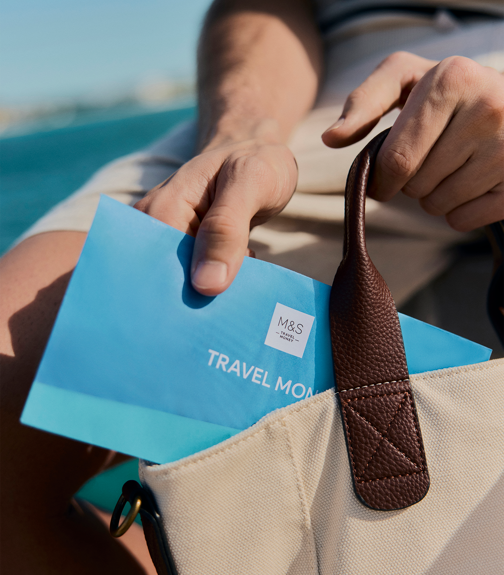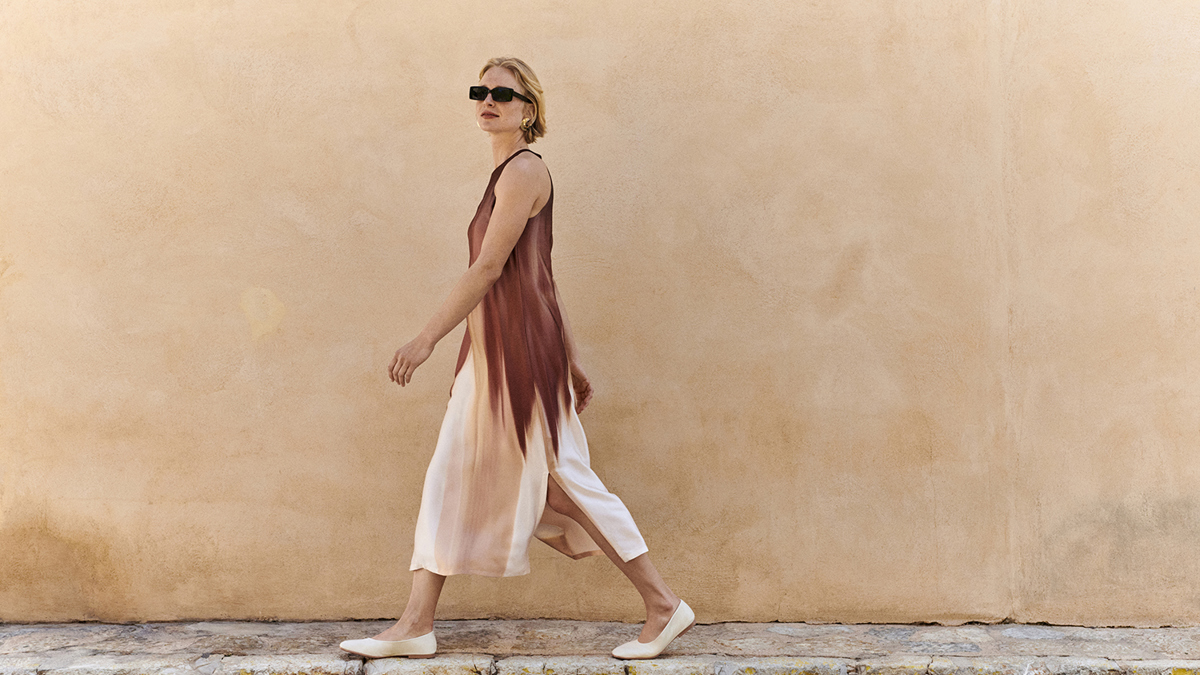How to order Indian Rupees
-
Order your Indian Rupees online with our click & collect currency service. Pick your collection date and collect from your chosen M&S store's bureau de change.
Click & collect INR in as little as 60 seconds^.
^Subject to availability
-
Visit a participating M&S store to buy Indian Rupees. With stores nationwide - many open seven days a week and late into the evening - you can buy your Travel Money at a time that suits you.

Why buy Indian Rupees from M&S Travel Money?
Planning a trip to India? When you get your Indian Rupees from M&S Travel Money, you can expect:
- Stores open 7 days a week.*
- A choice of collection options.
- The market's widest range of currencies.
*Store opening hours vary.

What you need to know about the Indian Rupee currency
The Indian Rupee is the official and legal tender of India. Its currency code is INR and its symbol is ₹. Each Rupee contains 100 Paise.
Indian Rupees come in both coins and banknotes.
Coins include:
₹0.50 (Rupee), ₹1, ₹2, ₹5, ₹10
Banknotes include:
₹1, ₹2, ₹5, ₹10, ₹20, ₹50, ₹100, ₹200, ₹500, ₹2,000
You can buy Indian Rupees online using our click & collect service, or in person at a participating M&S store.
Please note not all denominations are available to exchange.

Guide to India
If you're looking for a unique holiday destination, India is the place for you. It's a land of endless experiences, where ancient traditions meet modern energy. From the bustling streets of Delhi to the serene Kerala, every corner offers something exciting.
Explore the majestic Taj Mahal, walk through the temples of Varanasi, or celebrate the vibrant festivals that light up India throughout the year. Nature lovers will enjoy trekking the Himalayan peaks or unwinding on a beach in Goa.
Indian food is a journey in itself, with spices that will leave your taste buds tingling, street food full of flavour, and regional dishes representing India's diverse culture.
India isn't just a trip abroad - it's a whole world waiting to be explored.
Frequently asked questions
Yes, you can buy Indian Rupees (INR) in the UK. However, please note that INR is a restricted currency, so UK residents can only travel to India with a maximum of ₹25,000. There are no restrictions on the amount of other foreign currencies you can bring.
Non-Indian residents can take up to ₹25,00 out of the country.
You can use bank cards, including debit and credit cards, in urban areas and tourist spots in India. However, many businesses, particularly in rural areas, will only accept cash payments, so be sure to travel with cash Indian Rupees. This will also help you avoid the fees, charges and unfavourable exchange rates associated with overseas card payments.
India is generally considered a low-cost destination to visit. You can travel through India for £10-20 a day.
India's official currency is the Indian Rupee. Other currencies won’t be accepted.
All foreign nationals require a visa to visit India (these can be applied for online before your trip). Tourists need the e-Visa if they're planning to stay in India for 60 days or less. You'll be denied entry into the country if you fail to provide a visa upon arrival.
Always check the entry requirements with your country's embassy before departing.
Tipping, known as “bakshish” or “baksheesh”, is customary in India. In restaurants, if no service charge is included, tipping around 5-10% of the bill is common practice. When it comes to other services, like hotel staff, taxi drivers, and tour guides, it's best to base your tip on the quality of service you experienced.
India has 23 official languages, but the most widely spoken ones are:
- Hindi
- English
- Bengali
- Telugu
- Marathi
- Tamil
- Urdu
Depending on where in the country you're planning to visit, India is generally considered a safe destination for travellers. However, it's always wise to check and follow any government travel advisories before your trip.
You can also visit the Foreign, Commonwealth & Development Office (FCDO) for the latest government travel advice for India.
Most travellers consider October to March the best time to visit India. If you want cooler weather, December to January offers mild temperatures. Peak season, February to March, is when the weather warms up, and is also a great time to experience festivals like Holi.
Other popular currencies
If you’re planning a future holiday or a trip that takes in multiple destinations, these other currencies may be useful:


